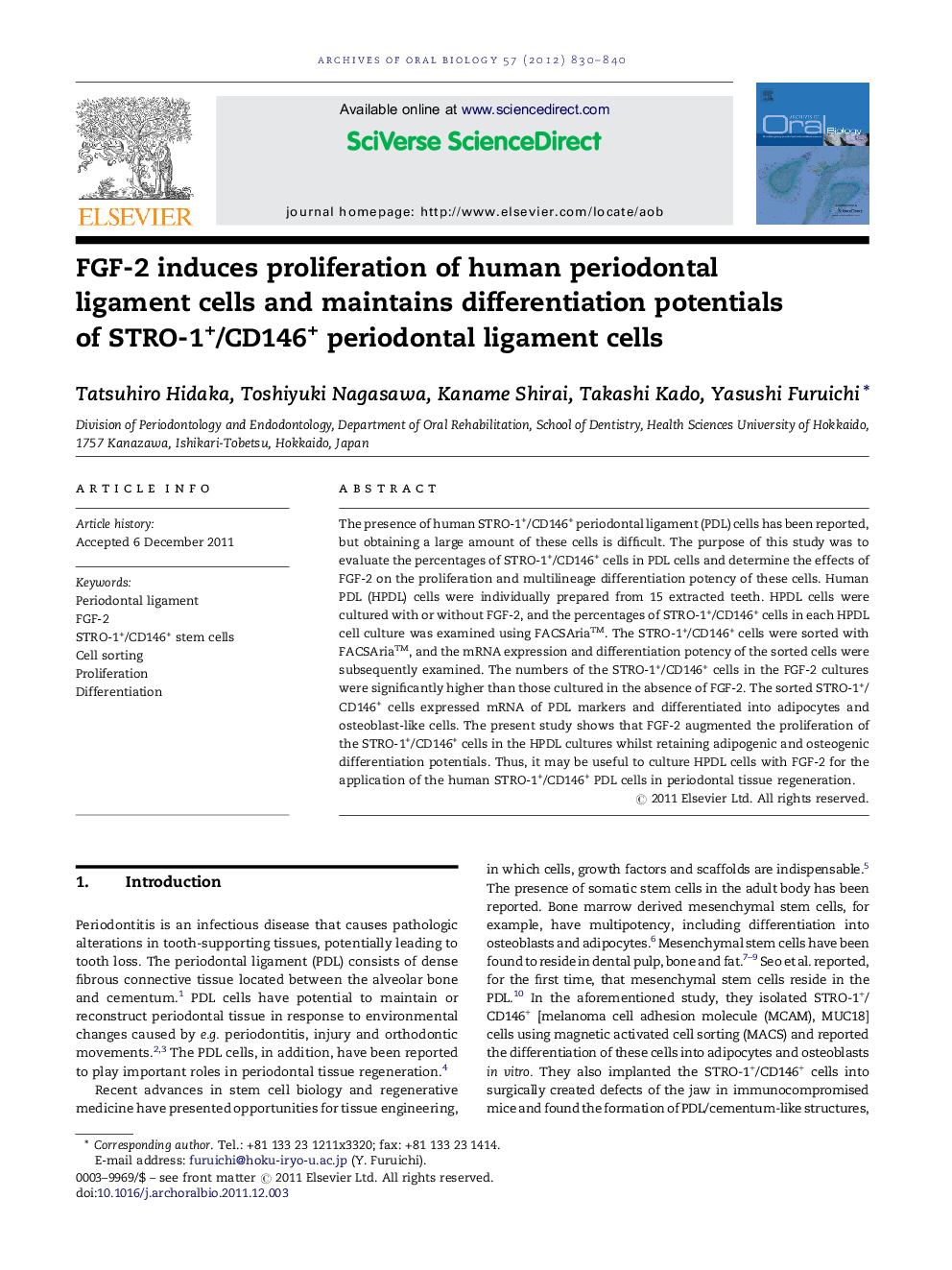| Article ID | Journal | Published Year | Pages | File Type |
|---|---|---|---|---|
| 6052015 | Archives of Oral Biology | 2012 | 11 Pages |
Abstract
The presence of human STRO-1+/CD146+ periodontal ligament (PDL) cells has been reported, but obtaining a large amount of these cells is difficult. The purpose of this study was to evaluate the percentages of STRO-1+/CD146+ cells in PDL cells and determine the effects of FGF-2 on the proliferation and multilineage differentiation potency of these cells. Human PDL (HPDL) cells were individually prepared from 15 extracted teeth. HPDL cells were cultured with or without FGF-2, and the percentages of STRO-1+/CD146+ cells in each HPDL cell culture was examined using FACSAriaâ¢. The STRO-1+/CD146+ cells were sorted with FACSAriaâ¢, and the mRNA expression and differentiation potency of the sorted cells were subsequently examined. The numbers of the STRO-1+/CD146+ cells in the FGF-2 cultures were significantly higher than those cultured in the absence of FGF-2. The sorted STRO-1+/CD146+ cells expressed mRNA of PDL markers and differentiated into adipocytes and osteoblast-like cells. The present study shows that FGF-2 augmented the proliferation of the STRO-1+/CD146+ cells in the HPDL cultures whilst retaining adipogenic and osteogenic differentiation potentials. Thus, it may be useful to culture HPDL cells with FGF-2 for the application of the human STRO-1+/CD146+ PDL cells in periodontal tissue regeneration.
Related Topics
Health Sciences
Medicine and Dentistry
Dentistry, Oral Surgery and Medicine
Authors
Tatsuhiro Hidaka, Toshiyuki Nagasawa, Kaname Shirai, Takashi Kado, Yasushi Furuichi,
